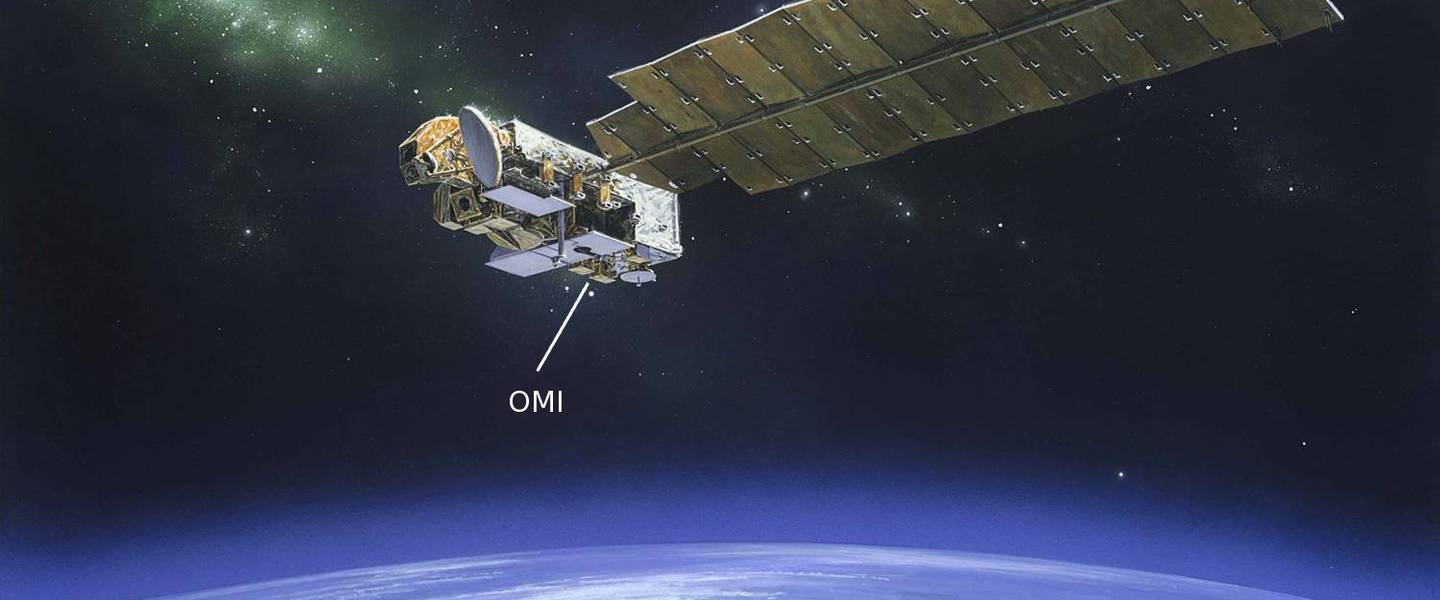100,000th orbit shows world-class Dutch instrument OMI
The Dutch satellite instrument OMI was built for a mission of at least six years. By now it has been going for eighteen years. Tomorrow OMI will make its 100,000th orbit around Earth. And still the instrument collects valuable information about air quality and the ozone layer.
The Ozone Monitoring Instrument was built at the beginning of this millennium by the Netherlands together with Finland. OMI had to answer a crucial question: does the global ban on chlorofluorocarbon (CFC) emissions help close the hole in the ozone layer? Based on 18 years of OMI data, scientists are cautiously optimistic. The hole in the ozone layer has not increased further, possibly recovery has begun.
OMI data are used for research as well as practical applications. Scientists use the data for research on the changing climate and radiation from solar activity (UV). Royal Netherlands Meteorological Institute (KNMI) uses OMI to monitor air quality. The long data set shows that the concentration of nitrogen dioxide in the air above European cities has decreased by 30 to 50 percent since 2005. This decrease has come about through regulations on nitrogen oxide emissions.
.png)
The average nitrogen dioxide column concentration in the lower 2 kilometers measured by OMI in the year 2005 (left) and (2022). Source: KNMI
Opportunity for the Netherlands
Joost Carpay of the NSO had to deal with OMI early in his career: 'In my first working week for the NIVR to be exact.' NIVR was one of the forerunners of the NSO and involved in the development of the instrument. 'We had previously built Sciamachy, also a satellite instrument for atmospheric research. The development of OMI was an opportunity for the Dutch space industry to further specialize and expand its activities in atmospheric research.'
With OMI, the Netherlands scored highly with NASA, which offered the opportunity to fly the instrument. Revolutionary was the use of a CCD: a rectangular sensor instead of a single line of pixels. This allowed the number of moving parts in the instrument to be greatly reduced. In addition, OMI was much smaller and lighter than NASA had expected. Carpay: "The Netherlands combined optical knowledge with a smart, small and robust design. This set us apart in the world.'

OMI instrument on the U.S. NASA EOS-Aura satellite. Source: NASA
Added value
According to Carpay, OMI still has added value, even though the Netherlands launched a worthy successor with Tropomi in 2017 and the launch of SpexOne on the U.S. satellite PACE is imminent. 'Our deep knowledge of OMI allows us to use the instrument to calibrate new satellite instruments. In addition, OMI still provides valuable measurement data: additional data points that allow us to measure even smaller variations in the atmosphere throughout the day.'
During the 100,000 orbits OMI has flown around the Earth since 2004, the instrument made some nine billion measurements. What does that longevity say about the Netherlands' capabilities in space exploration? Carpay: "OMI shows that the Netherlands can build atmospheric satellite instruments that are unmatched in the world. This was the first collaboration between the Netherlands and NASA in Earth observation. The cooperation in which we invested then continues to this day: when NASA needs optical knowledge, they prefer to come shopping in the Netherlands.'
OMI was developed by Airbus Netherlands (then Dutch Space) and TNO, together with numerous Dutch subcontractors. OMI was funded by the ministries of Economic Affairs, Infrastructure and the Environment and Education, Culture and Science. Analysis and processing of OMI scientific data is done by the Royal Netherlands Meteorological Institute (KNMI).